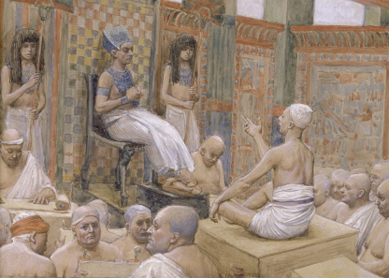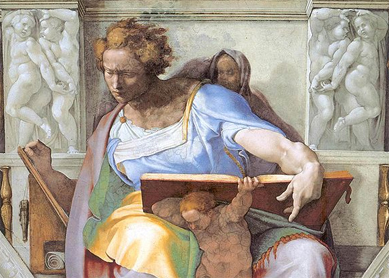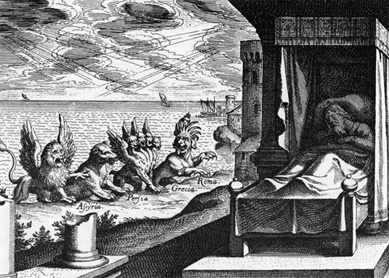In the cultures of the ancient Near East, dreams fell into different categories, each of which was understood differently. Among everyday dreams, a distinction was drawn between ordinary dreams, without any significance, and others that were signs of destiny; these dream omens required the interpretative skills of a specialist—a professional diviner, or oneiromancer. Other dreams contained a clear and direct message from a divinity and did not require interpreters. These message dreams were akin to oracles, and those who received them (men or women) were considered to be prophets or messengers of the gods. Still other dreams were the particular privilege of kings; they were made up of grandiose, symbolic scenes or images, sometimes with divine apparitions. Enigmatic in content, these symbolic dreams required an interpreter (male or female), using either intuition or divine inspiration to decipher them.
These distinctions are present in the Hebrew Bible, though there is no clear evidence of oneiromancy for everyday dreams; perhaps the practice was covered by the general prohibition of divination (Deut 18:10-11), though it is not the subject of any specific legislation. Nevertheless, the premonitory character of certain dreams was clearly recognized (Judg 7:13-15), and the belief that God could use dreams to instruct an individual directly (Job 33:14-18) was shared with other peoples of antiquity. According to the Babylonian Talmud, in the Roman period there were 24 rabbinic dream-interpreters practicing in Jerusalem for a fee (b. Berakot 55a-b).
Dreams reputed to have been sent by God fall into two categories: those seen (visual) and those heard (auditory). The former are symbolic and need an interpretation; they are found mainly in the story of Joseph (Gen 37:5-11, Gen 40-41) and in the narratives of the book of Daniel (Dan 2, Dan 4, Dan 7). These dream narratives are literary fictions intended to highlight the ability and the wisdom of the interpreter (Joseph or Daniel). Auditory dreams, in contrast, convey a clear message from God; they are addressed to kings, such as Solomon (1Kgs 3) or Abimelech (Gen 20:3-7); or to patriarchs, such as Jacob (Gen 28); or to other important figures, such as Laban (Gen 31:24). This kind of dream usually had the function of legitimizing the authority of the dreamer by showing his close connection with God.
Although the prophetic books speak of dreams very rarely and are sometimes contradictory on the subject, it is certain that some form of dream, which is never precisely described, did sometimes influence prophetic inspiration (Num 12:6-8). Some prophets received oracles by night and then uttered them by day (1Sam 15:16, 2Sam 7:4-5, Jer 31:26). Balaam even converses with God by night (Num 22) before pronouncing his oracles. The story of Samuel’s calling (1Sam 3) illustrates perfectly how the divine word addresses a particular state of consciousness by night; there is no vision but rather a word heard during the sleep which awakens the prophet’s consciousness, in his sleep, to the fact that he is listening to a divine message. When Jeremiah condemns “false prophets” who present their dreams as divine oracles (Jer 23:25-32), he criticizes the fact that their dreams or visions come from their imagination and not from God (see also Jer 14:14, Zech 10:2). Nevertheless, Jer 29:8 and Deut 13:2-6 also express some distrust of dreams, possibly in reaction to the influence exerted on exiled Jews by Babylonian oneiromancy.
In the Judaism of the Second Temple period, dreams constituted a recognized means of access to divine wisdom, even if it was strictly controlled (Sir 34:1-8), and an oracle in the book of Joel considers dreams to be one of the eschatological manifestations of the outpouring of the Spirit (Joel 2:28). The ability of certain wise men to interpret dreams and prophecies was considered a gift from God, as is illustrated by figures such as Joseph (Gen 40-41), whose story was written in the Jewish diaspora during the Persian period, or Daniel (Dan 1-6). From the second century B.C.E., when prophecy was thought to have ended, this form of inspiration took over and was expressed in the visionary style of apocalyptic writings. In these writings, the difference between dreams and visions to all intents and purposes disappears, as in Dan 7-12 or in 1 Enoch.




